The Gothic quarter of Barcelona, between Vía Laietana and the famous Rambla, is the heart of the city’s development.
A convoluted tour of the streets and some small squares represents this beautiful neighborhood, where there is much to discover.
Religious architecture has left its mark; and it is spatially that the Gothic style sets the pace in this very special neighborhood.
One of those churches, which are the testimony of Barcelona’s past, is that of Santa María del Pi. Today surrounded by squares, which once were cemeteries, the temple is part of the architectural legacy of the Catalan Gothic.
It was built throughout the 14th century, during the period of greatest expansion and boom of the Crown of Aragon.

The port and its commercial activity had turned Barcelona into a rich and prosperous city.
That same prosperity would give the input to the renewal of the city, and the churches are not left out of that transformation: bigger temples were needed, that could accommodate more parishioners, and more beautiful. For this reason, around 1320 (it is not known when this started exactly) the construction of a Gothic temple began, where there had previously been a Romanesque one.
In the middle of the century, and with half a temple already built, the works had to be interrupted due to the arrival of the black plague in the city. Finally, in 1391 the last stone was laid and the consecration would come in the middle of the following century; century in which the bell tower, the sacristy, the Chapter chapel and the rectory would also be added.
Where did it all start?
Despite the lack of documentary evidence, it is generally believed that as early as the 5th century AD, in the place where we find the Gothic temple today, there was a small church or construction, outside the ancient Roman walls that delimited the city at that time.
Around this initial construction, it is believed, a settlement developed that later became known as Vila Nova del Pi: one of the suburbs of that old Barcelona, which some eight centuries later would be incorporated into the city with the expansion of the walls.
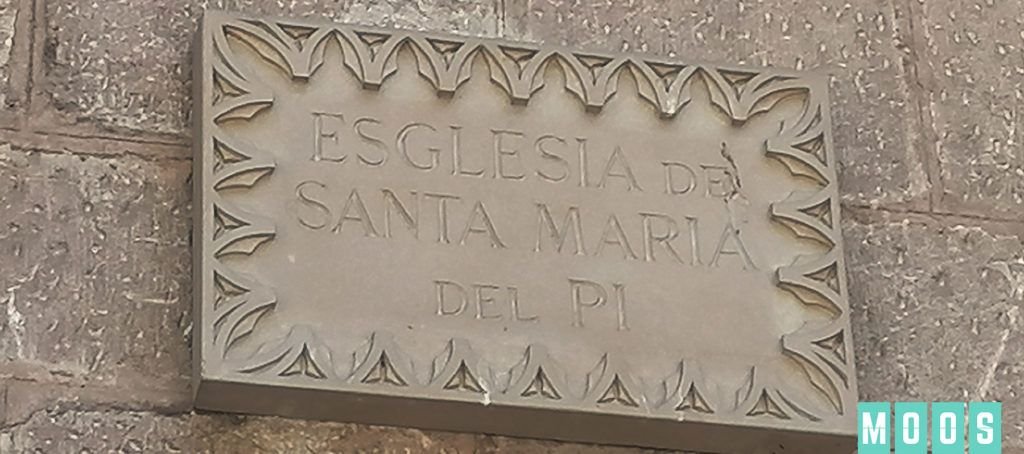
Now, if we follow the documentation, the first reference to Santa María del Pi is from 987, when there are references to a small Romanesque church with at least three altars.
It would be, as we said before, in the fourteenth century when the great Gothic renovation arrived to this temple.
Testimony of the past
Santa María del Pi, being more than 600 years old, has witnessed the historical events that have marked the life of Barcelona and Spain.
Earthquakes, bombings, sieges, fires … yes, it has survived a long time.
The church has been part of the defenses of the city and its bells rang strongly to rally the people in armed conflicts, not without suffering damage to its structure and loss of its artistic heritage.
One of the most devastating events was the one that occurred in the context of the Spanish Civil War, in 1936. The fire, carried out by anti-clerical groups, consumed the High Altar, the stalls, portals, chapels and the Main Organ, among others structures. And the rose window, one of the largest in Europe of almost 10 meters in diameter, exploded due to the heat.
It was the effort of the community that managed to give life to this temple again, so that it could continue to be part and witness of the history of this wonderful city.
Why “Santa María del Pi”?
An unmissable element of the Plaza de Santa María del Pi is the pine. Because, let’s say it already, “pi” in Catalan means “pine”.

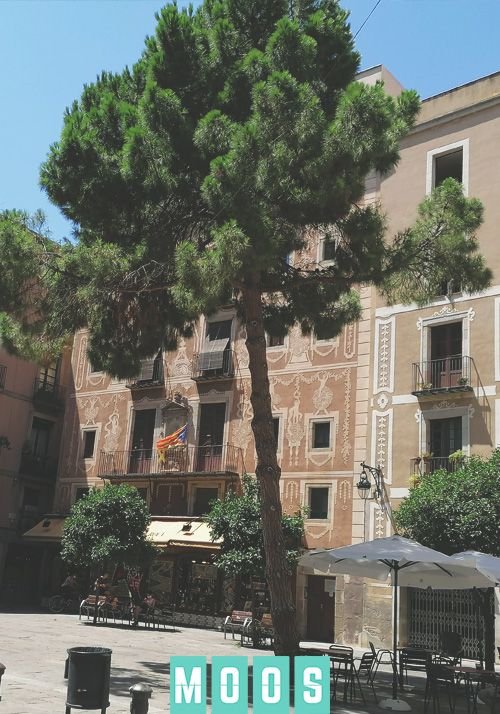
Popular tradition tells that a sailor found the image of the virgin in the crown of a tree like this. So a small chapel was built that, over time, evolved into the church we have today.
It is clear that the one that stands today in the plaza is not the original pine. Upon its death, it was replaced with a new one, as a memory of the one where the miracle occurred.
It is even said that this specimen continued to exist in times of the French invasion, at the beginning of the 19th century, but that it died as victim of a bayonet attack by a Napoleonic soldier.
The pine continued to be replaced whenever necessary. The one that stands today in the square is part of such a long tradition since 1985.
A bohemian avenue
Not only the church is beautiful: its surroundings are not far behind.
The three small squares that surround it come alive, especially on weekends.
Terraces of bars and cafes overflowing with people, street artists who share their music and talent and, always located in the Plaza de Sant Josep Oriol, local painters who sell their works, many of them portraying Barcelona and its corners.
Also, in the square that the main façade of the church faces, there is usually a craft fair held by the Food Artisans Collective.
Every Saturday and Sunday and the first and third Friday of each month, you can find them offering cheeses, honey and its byproducts, yogurts, pates, sausages, caramels, spices, jellies, olives, cookies, sweets, wines and more.
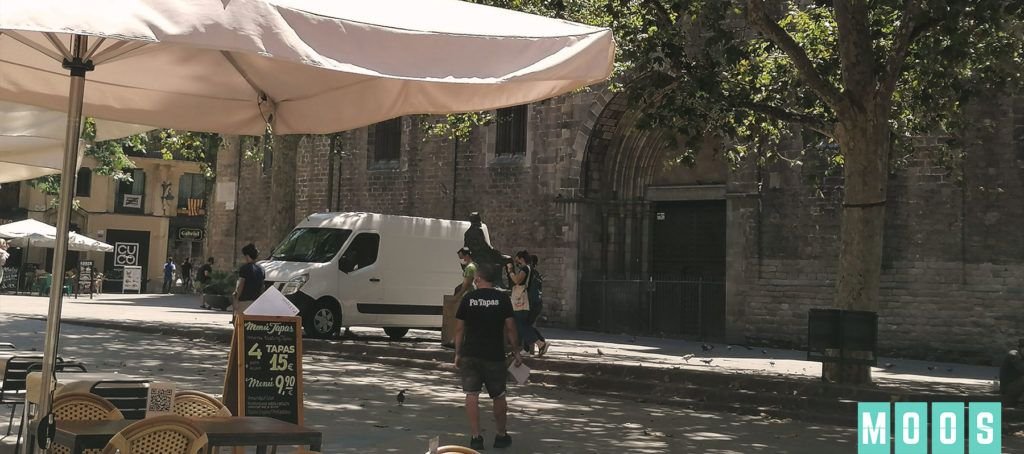
Barcelona has many corners to discover and we always say that it is best to get carried away and get lost in the city. There is no better way to get to know it.
But if you are in the Gothic, do not miss the opportunity to meet Santa María del Pi: a corner where art, history and bohemian lifestyle come together, always under the shade of a legendary pine tree.
If you want to visit the church inside, here’s the link for you to check the schedules and prices.
Sources:


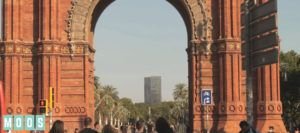
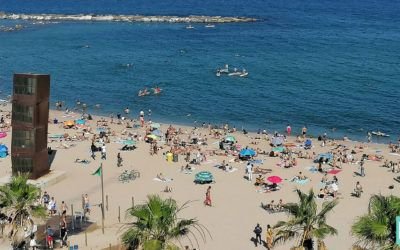

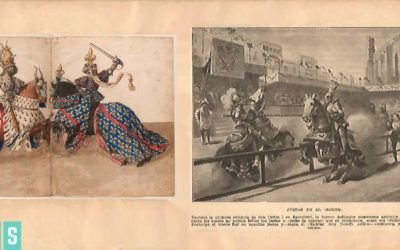

0 Comments